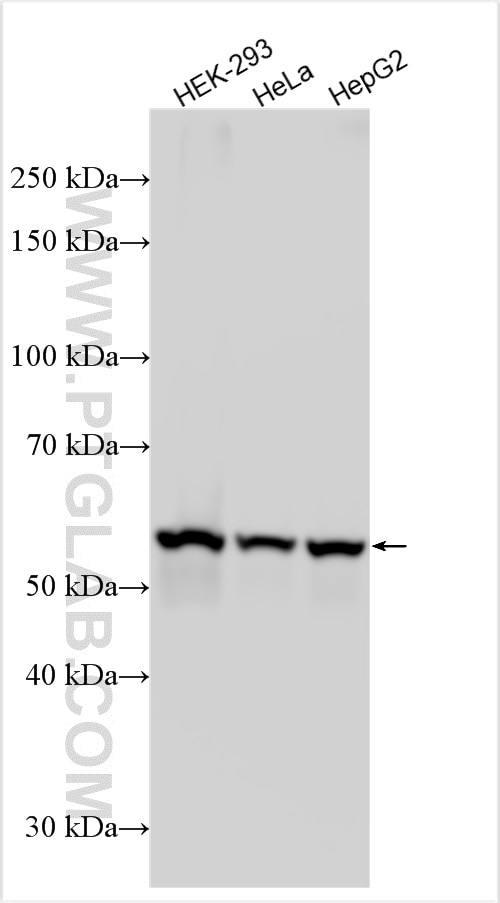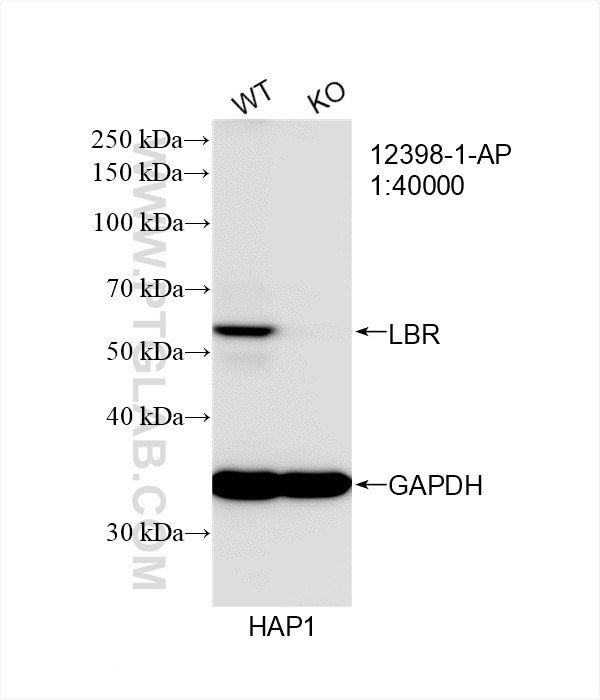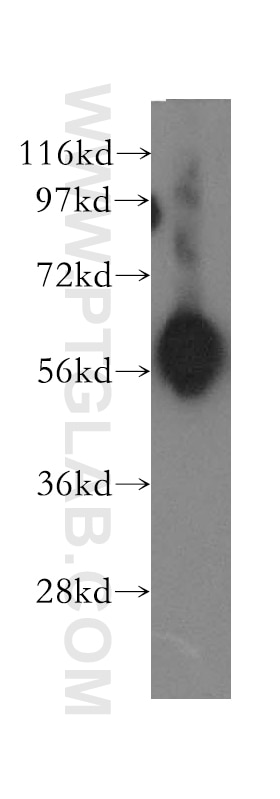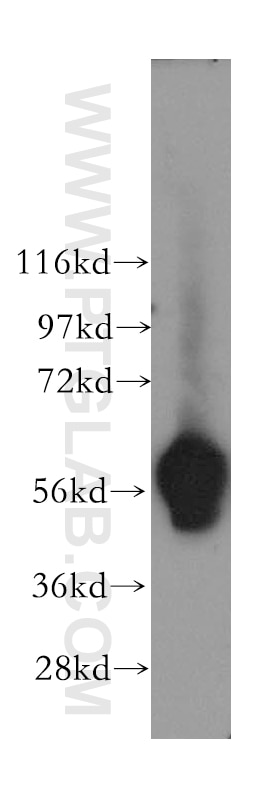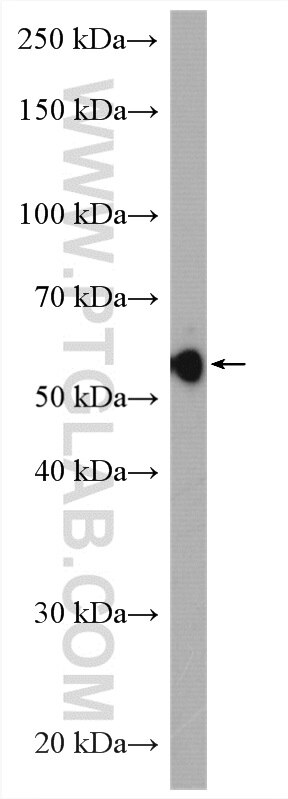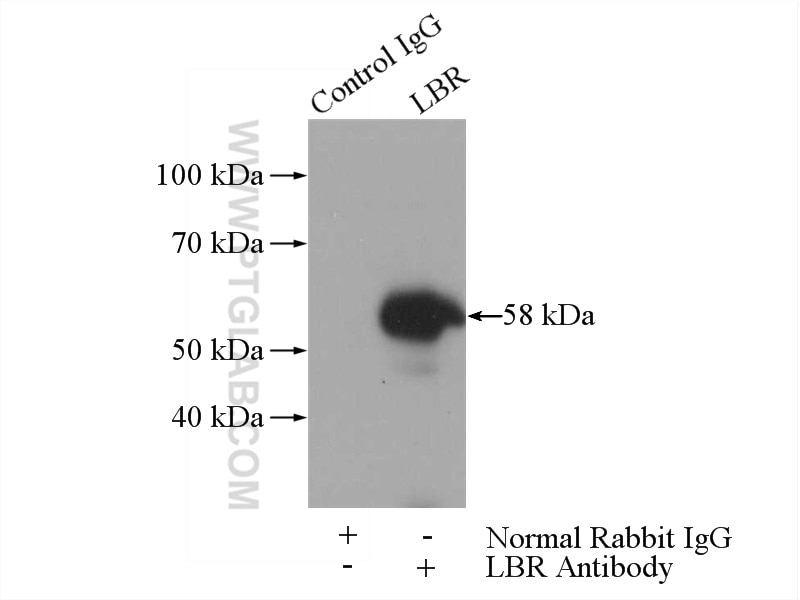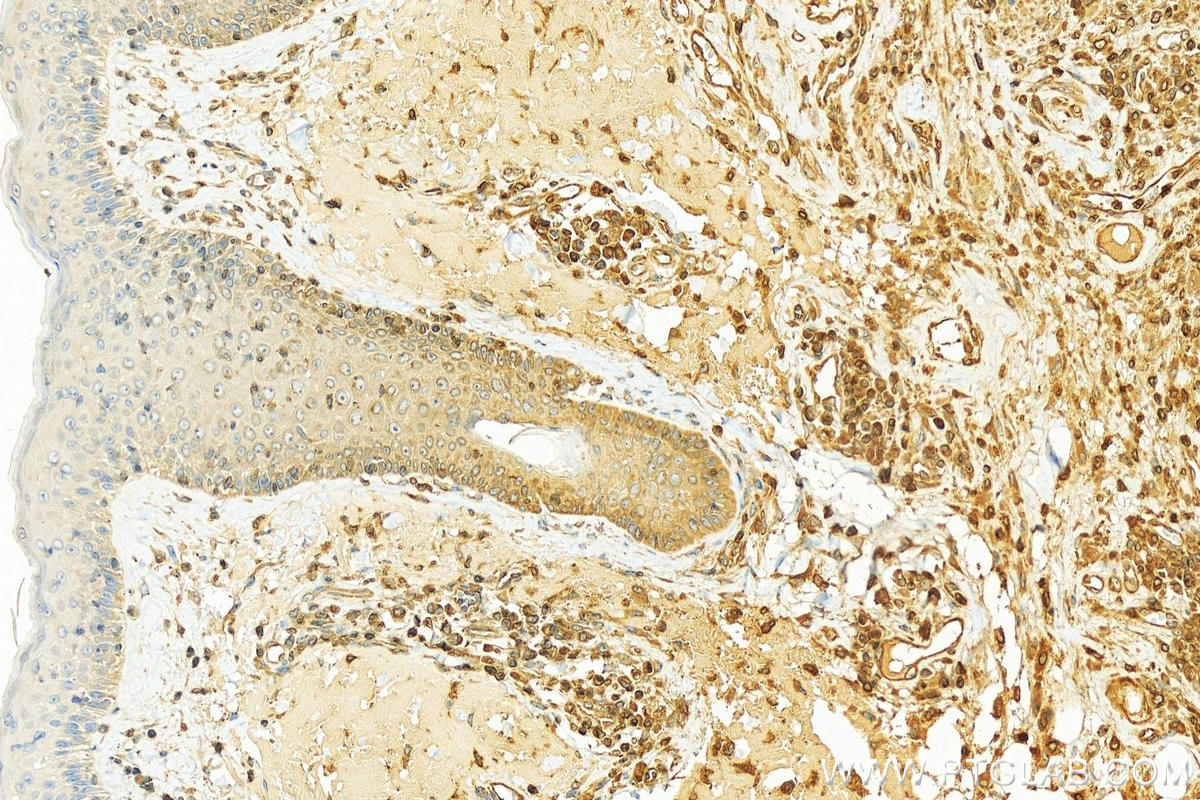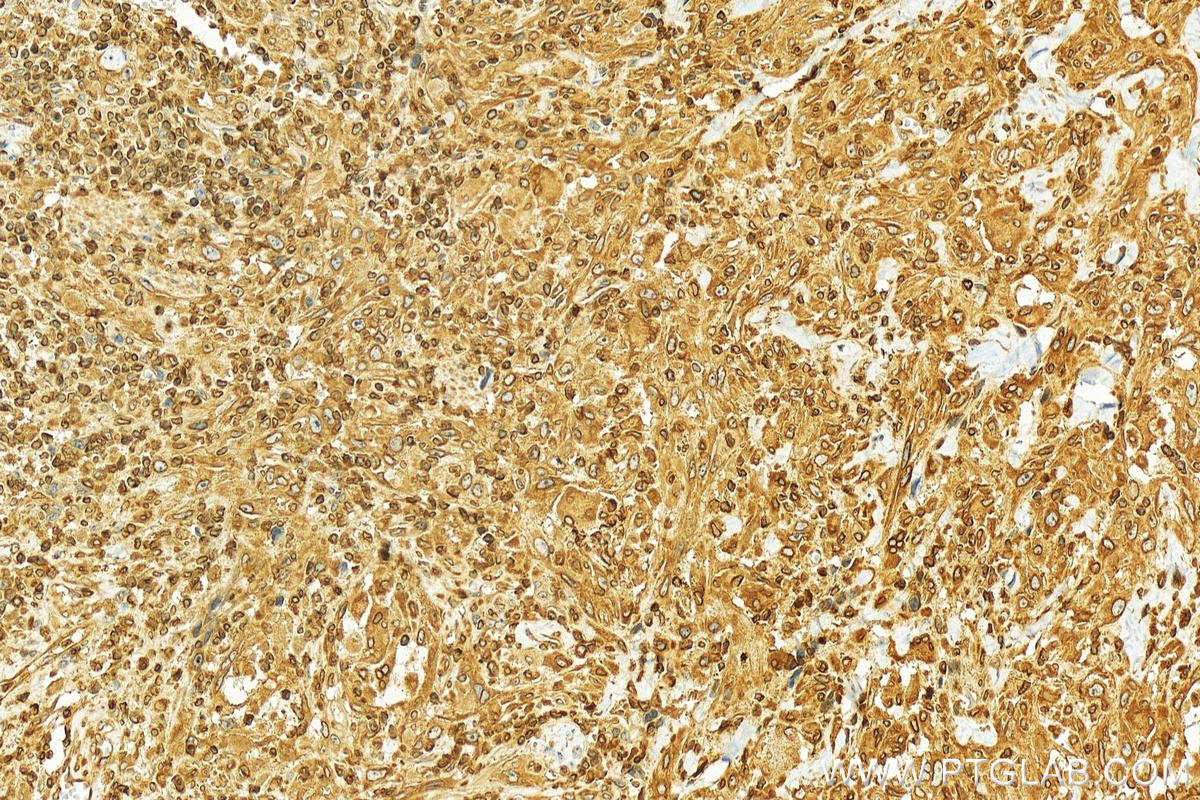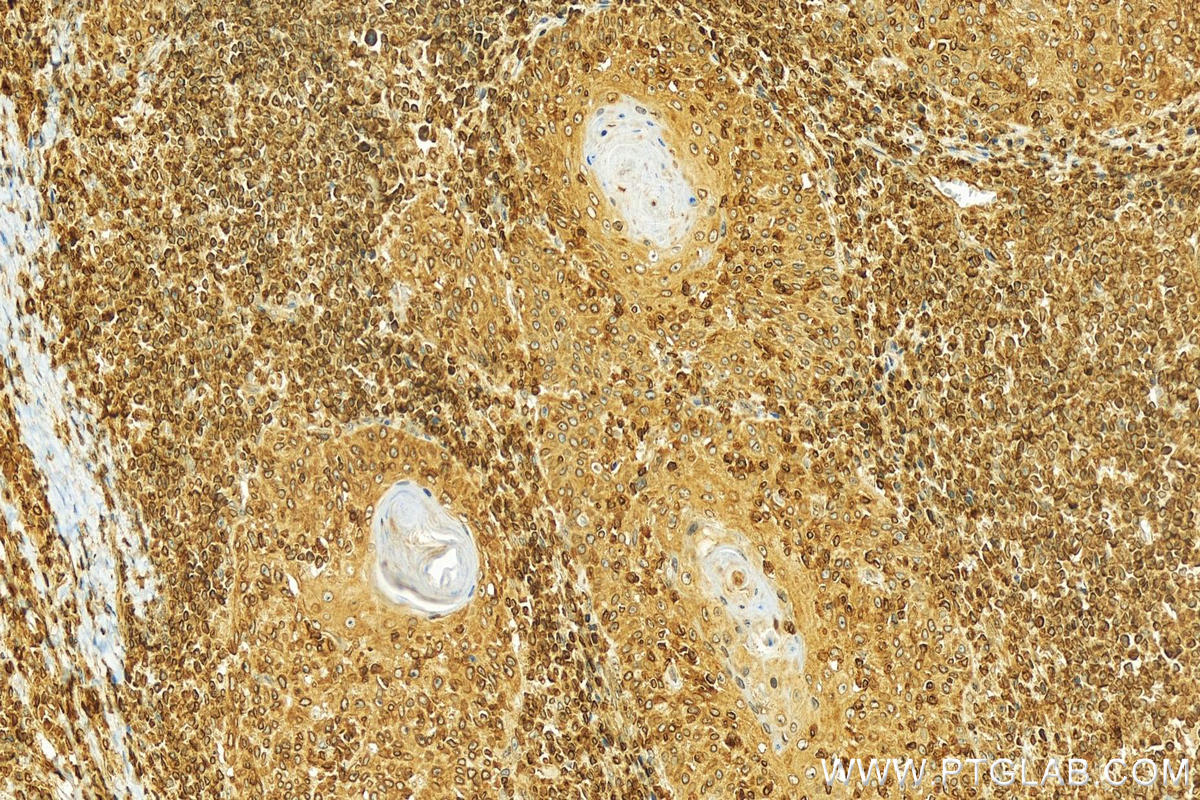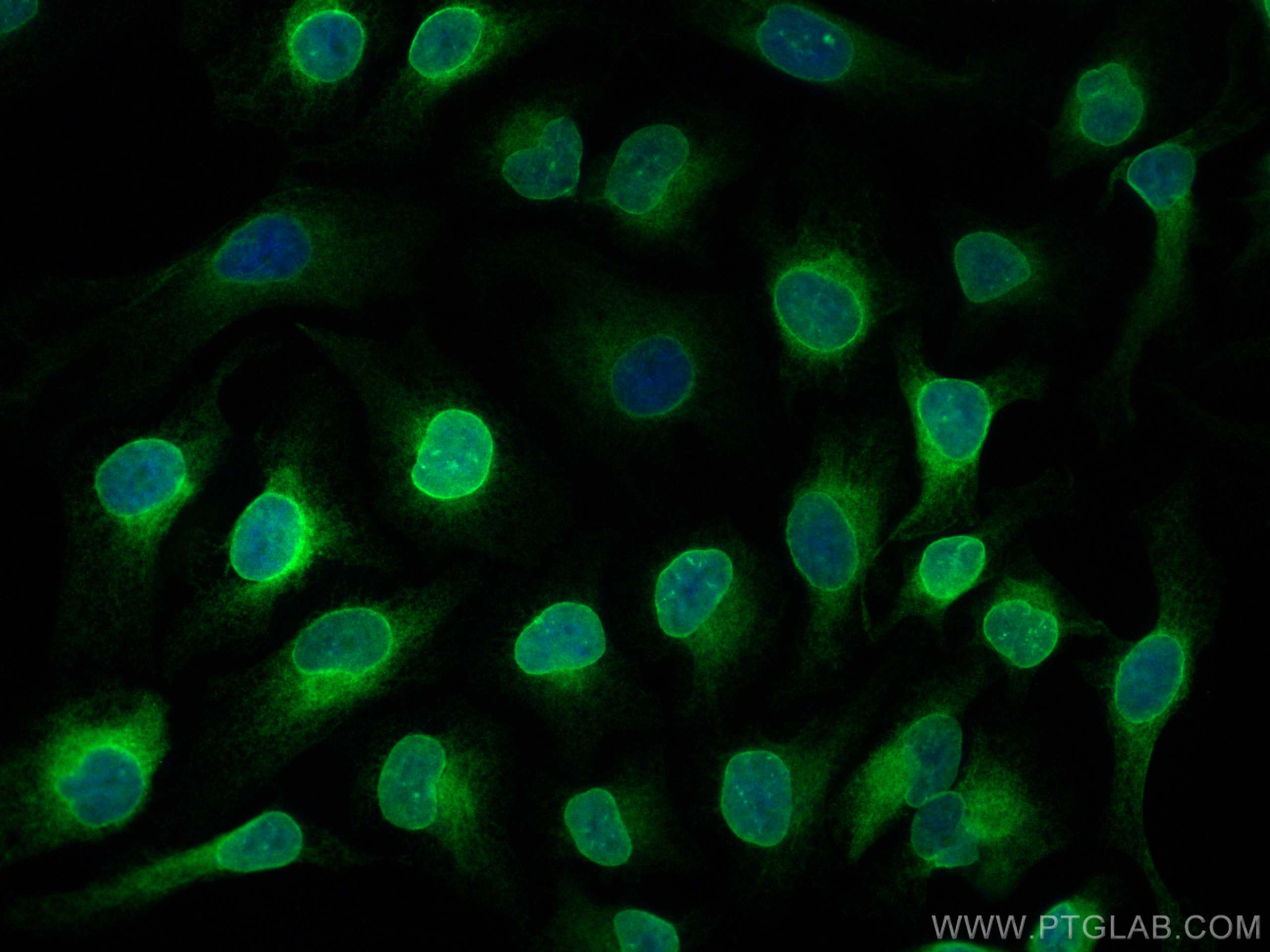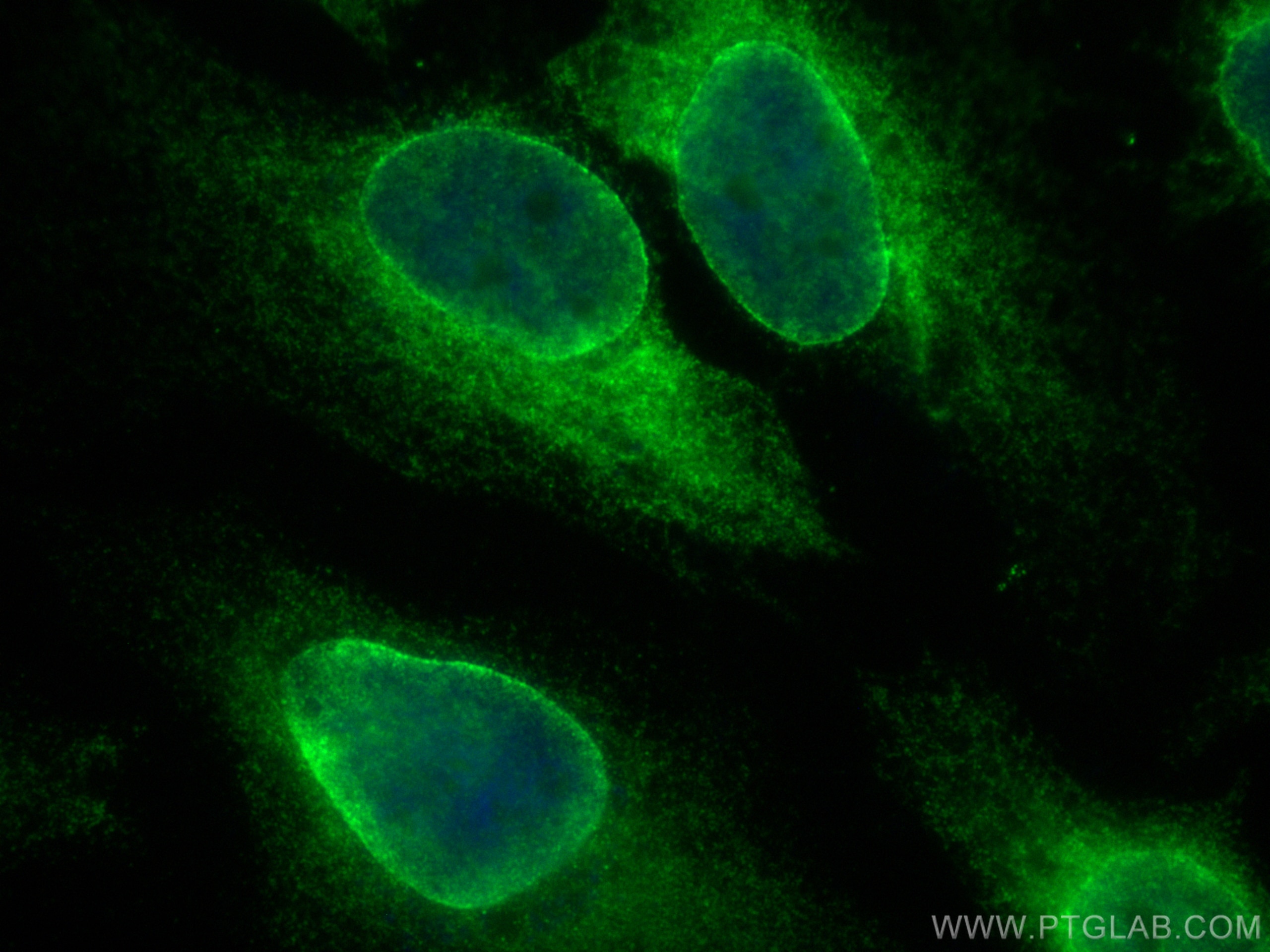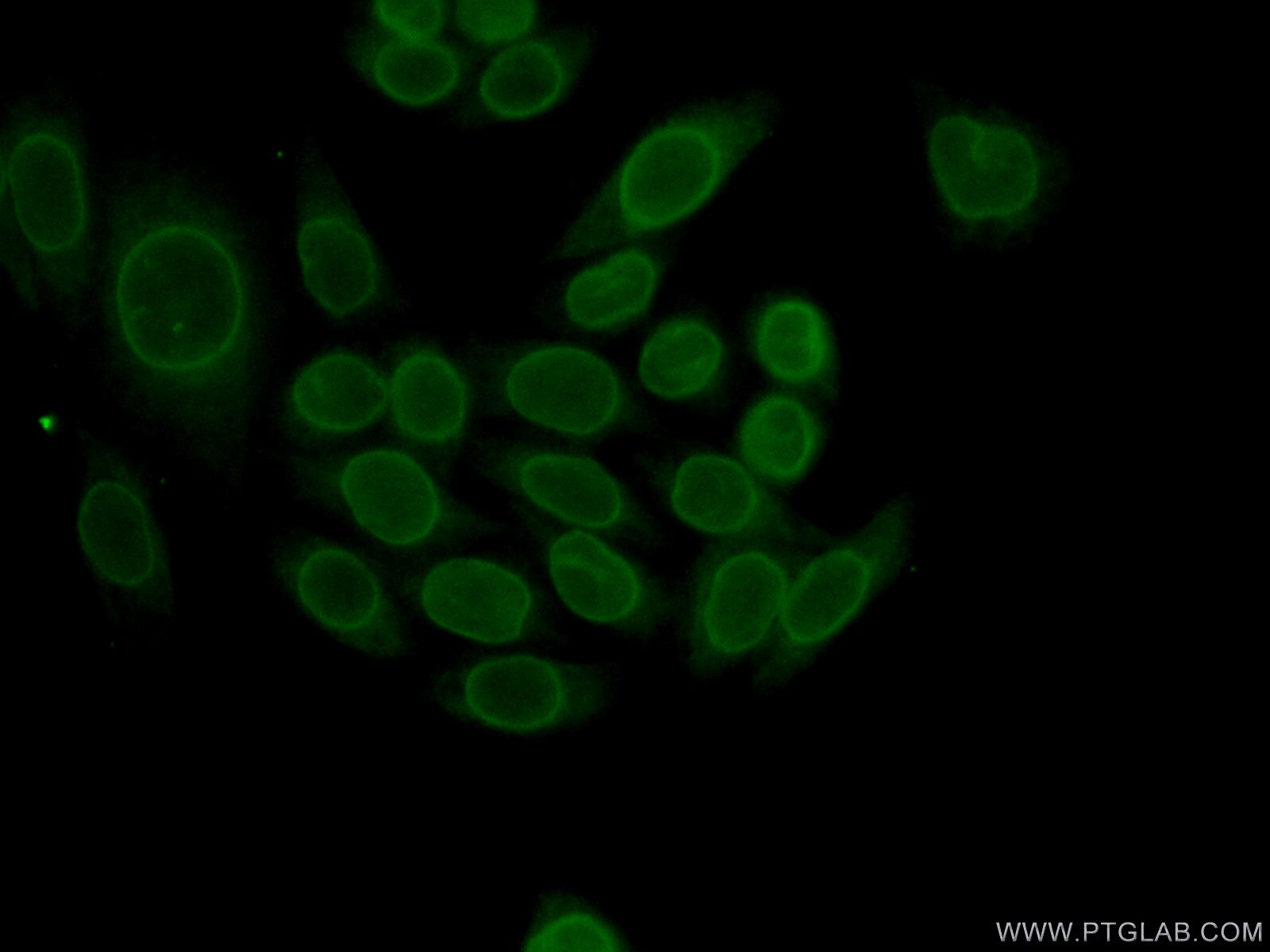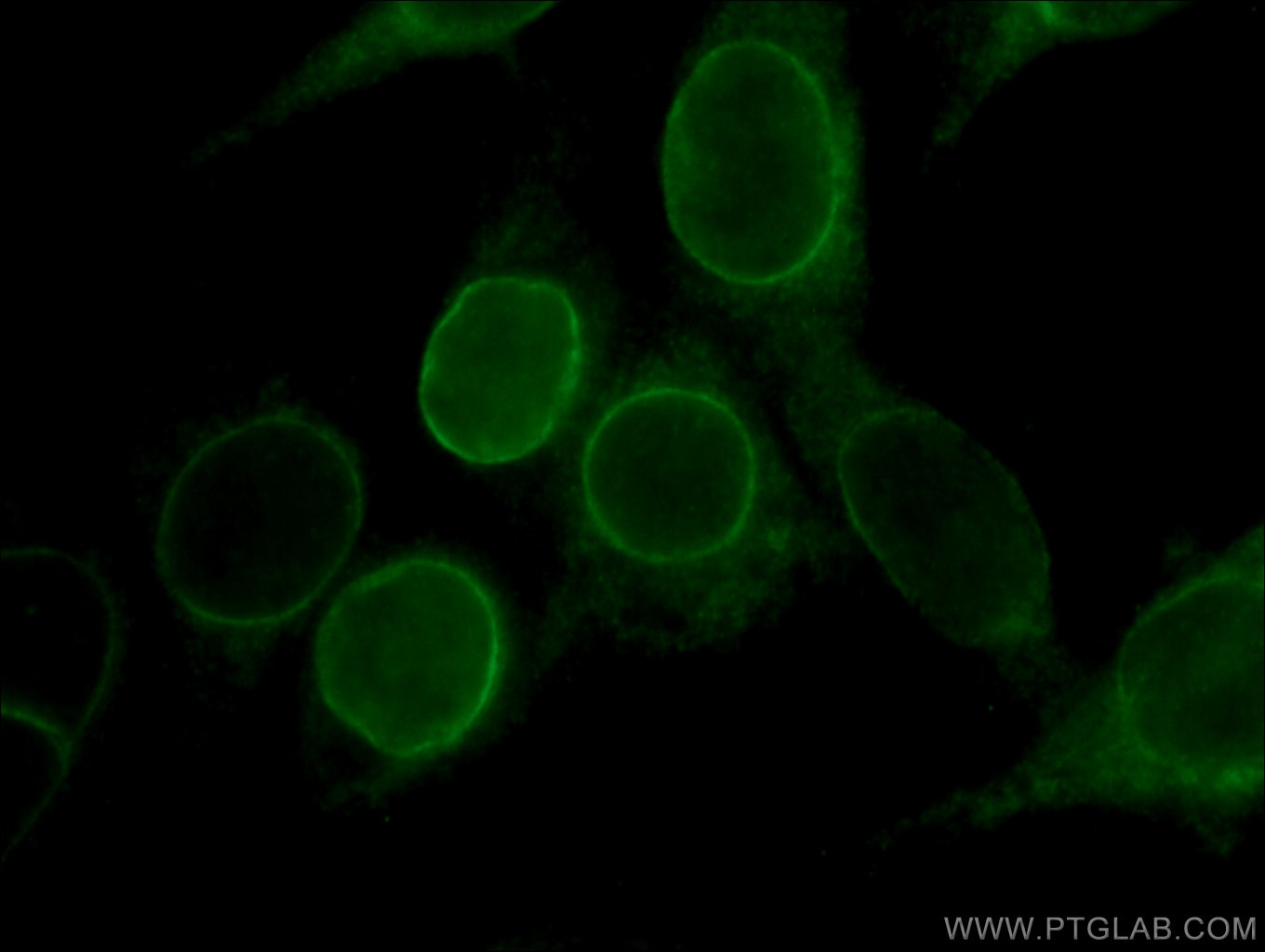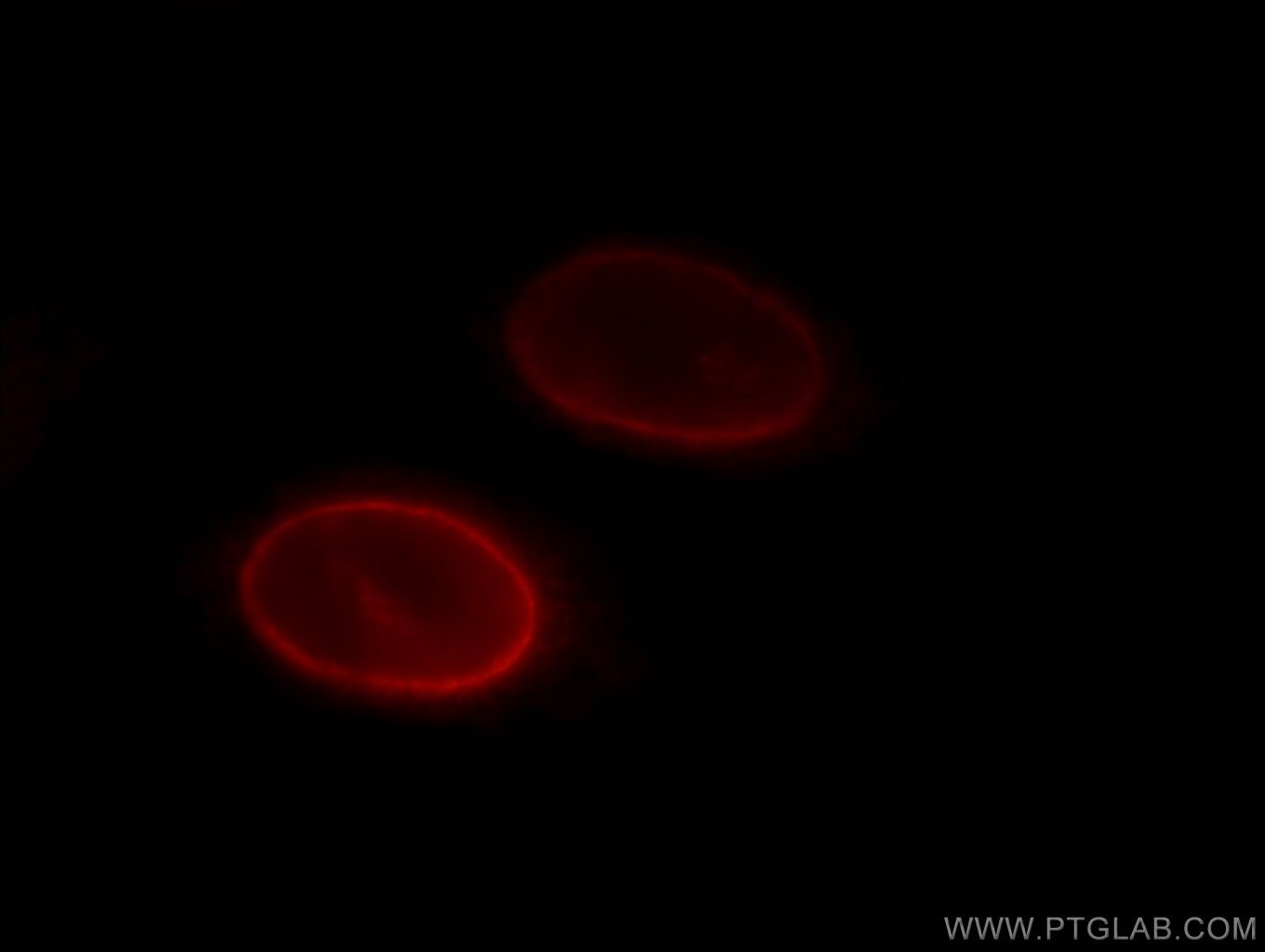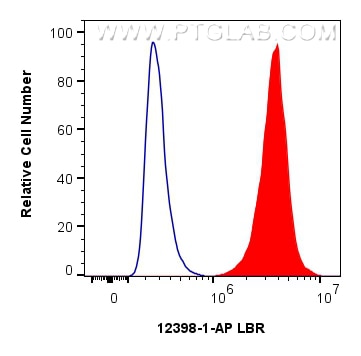- Phare
- Validé par KD/KO
Anticorps Polyclonal de lapin anti-LBR
LBR Polyclonal Antibody for WB, IHC, IF/ICC, FC (Intra), IP, ELISA
Hôte / Isotype
Lapin / IgG
Réactivité testée
Humain, rat, souris
Applications
WB, IHC, IF/ICC, FC (Intra), IP, CoIP, ChIP, ELISA
Conjugaison
Non conjugué
N° de cat : 12398-1-AP
Synonymes
Galerie de données de validation
Applications testées
| Résultats positifs en WB | cellules HEK-293, cellules A375, cellules C2C12, cellules HeLa, cellules HepG2, tissu cérébral humain |
| Résultats positifs en IP | cellules A375 |
| Résultats positifs en IHC | tissu de cancer de la peau humain, il est suggéré de démasquer l'antigène avec un tampon de TE buffer pH 9.0; (*) À défaut, 'le démasquage de l'antigène peut être 'effectué avec un tampon citrate pH 6,0. |
| Résultats positifs en IF/ICC | cellules HeLa, cellules C6, cellules HepG2 |
| Résultats positifs en FC (Intra) | cellules HeLa |
Dilution recommandée
| Application | Dilution |
|---|---|
| Western Blot (WB) | WB : 1:5000-1:50000 |
| Immunoprécipitation (IP) | IP : 0.5-4.0 ug for 1.0-3.0 mg of total protein lysate |
| Immunohistochimie (IHC) | IHC : 1:200-1:800 |
| Immunofluorescence (IF)/ICC | IF/ICC : 1:300-1:1200 |
| Flow Cytometry (FC) (INTRA) | FC (INTRA) : 0.40 ug per 10^6 cells in a 100 µl suspension |
| It is recommended that this reagent should be titrated in each testing system to obtain optimal results. | |
| Sample-dependent, check data in validation data gallery | |
Applications publiées
| WB | See 6 publications below |
| IF | See 4 publications below |
| IP | See 1 publications below |
| CoIP | See 1 publications below |
| ChIP | See 1 publications below |
Informations sur le produit
12398-1-AP cible LBR dans les applications de WB, IHC, IF/ICC, FC (Intra), IP, CoIP, ChIP, ELISA et montre une réactivité avec des échantillons Humain, rat, souris
| Réactivité | Humain, rat, souris |
| Réactivité citée | Humain, souris |
| Hôte / Isotype | Lapin / IgG |
| Clonalité | Polyclonal |
| Type | Anticorps |
| Immunogène | LBR Protéine recombinante Ag3088 |
| Nom complet | lamin B receptor |
| Masse moléculaire calculée | 615 aa, 71 kDa |
| Poids moléculaire observé | 58 kDa |
| Numéro d’acquisition GenBank | BC020079 |
| Symbole du gène | LBR |
| Identification du gène (NCBI) | 3930 |
| Conjugaison | Non conjugué |
| Forme | Liquide |
| Méthode de purification | Purification par affinité contre l'antigène |
| Tampon de stockage | PBS with 0.02% sodium azide and 50% glycerol |
| Conditions de stockage | Stocker à -20°C. Stable pendant un an après l'expédition. L'aliquotage n'est pas nécessaire pour le stockage à -20oC Les 20ul contiennent 0,1% de BSA. |
Informations générales
Lamin-B receptor (LBR) is an integral membrane protein of the inner nuclear membrane that contains a hydrophilic N-terminal end protruding into the nucleoplasm, eight hydrophobic segments that span the membrane and a short, nucleoplasmic C-terminal tail (PMID: 28858257). LBR anchors the lamina and the heterochromatin to the inner nuclear membrane (PMID: 10828963; 28858257). It is also essential for cholesterol synthesis (PMID: 27336722). Mutations of the LBR gene have been associated with autosomal recessive HEM/Greenberg skeletal dysplasia and Pelger-Huët anomaly and Greenberg skeletal dysplasia (PMID: 12618959; 12490533). The calculated molecular mass of LBR is 71 kDa, which is larger than the apparent molecular mass of 58 kDa, probably due to the aberrant migration of membrane proteins subjected to SDS-PAGE (PMID: 2847165; 2170422).
Protocole
| Product Specific Protocols | |
|---|---|
| WB protocol for LBR antibody 12398-1-AP | Download protocol |
| IHC protocol for LBR antibody 12398-1-AP | Download protocol |
| IF protocol for LBR antibody 12398-1-AP | Download protocol |
| IP protocol for LBR antibody 12398-1-AP | Download protocol |
| Standard Protocols | |
|---|---|
| Click here to view our Standard Protocols |
Publications
| Species | Application | Title |
|---|---|---|
Mol Cell Interaction of tau with HNRNPA2B1 and N6-methyladenosine RNA mediates the progression of tauopathy. | ||
Nat Commun PRC1 collaborates with SMCHD1 to fold the X-chromosome and spread Xist RNA between chromosome compartments. | ||
PLoS Genet RCC1L (WBSCR16) isoforms coordinate mitochondrial ribosome assembly through their interaction with GTPases. | ||
J Cell Sci Emery-Dreifuss muscular dystrophy mutations impair TRC40-mediated targeting of emerin to the inner nuclear membrane. | ||
J Cell Mol Med Novel long non-coding RNA CYB561-5 promotes aerobic glycolysis and tumorigenesis by interacting with basigin in non-small cell lung cancer. | ||
Mol Cell Biol Interactome analysis reveals a novel role for RAD6 in the regulation of proteasome activity and localization in response to DNA damage. |
